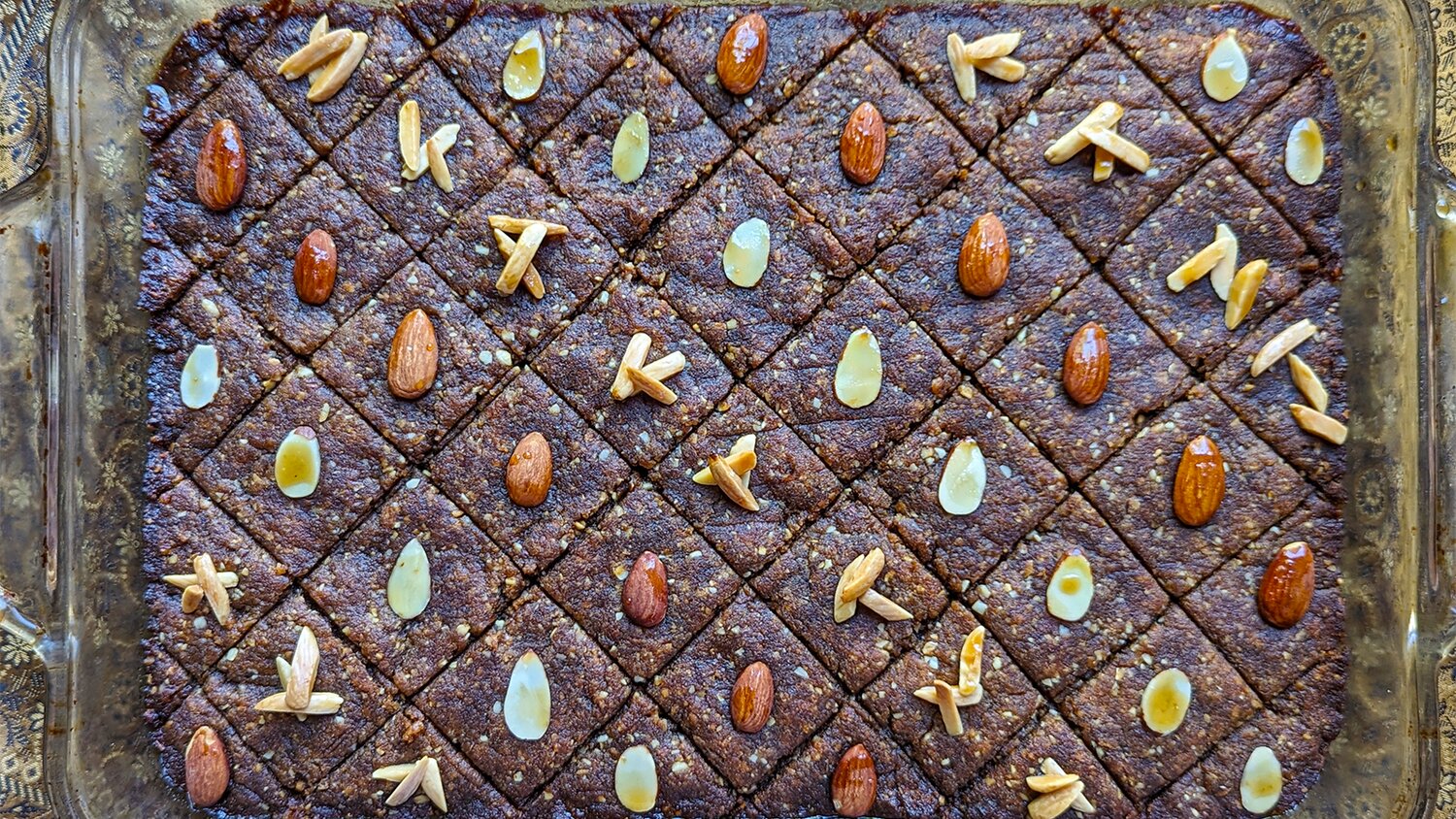Tishpishti is Sephardi honey cake, but better
This story originally appeared on The Nosher.
Honey cake is a hallmark of Rosh Hashanah and the fall Jewish holidays – Ashkenazi honey cake, that is. But did you know there’s a Sephardi cake traditionally served for Rosh Hashanah, Yom Kippur breakfast and during Sukkot? Like its Eastern European counterpart, tishpishti symbolizes wishes for a sweet new year and the fullness of life. The cake is also popular for Purim and adapted for Passover.
Semolina pastries and puddings have been made for centuries throughout the Mediterranean, North Africa and the Middle East. Tishpishti is traditionally made with fine semolina and soaked in a sweet syrup of sugar, honey or a mixture, but beyond these common elements, there are many variations in both the way tishpishti is made – such as nuts or no nuts, eggs or no eggs, flavored with lemon, orange or rose water – and even what it’s called according to different geographic and cultural roots. For example, in Egypt, it’s basboosah or baboussa, namora or namoura in Syria and shamali in Crete.
Tishpishti is perhaps the name most used and, as we know it today, the cake originated in Turkey. In the “Encyclopedia of Jewish Food,” Gil Marks explains that in Israel and for Jews from once-Ottoman Turkey, Greece and the Balkans, the name is probably a nonsense name from the Turkish “tez” (fast/quick) and “pisti” (plane/slope). Put together, it means “quickly done.” In Ladino it might also be called pispiti, tupishti and revani, which Joyce Goldstein in “Sephardic Flavors: Jewish Cooking of the Mediterranean” notes is named after a 16th century Turkish poet “who wrote about the delights of food.”
Many tishpishti recipes use eggs, including those that instruct you to whip the whites separate from the yolks, a Sephardi contribution to tishpishti. This recipe, however, is based on a very old traditional way of making cakes from a thick dough without eggs. My concession to modernity is adding baking powder and soda, both 19th century products, to lessen the density of the cake. Using ground almonds instead of walnuts will result in a lighter colored cake, which is traditional at Rosh Hashanah to symbolize a bright new year. Tishpishti is delicious on its own or served with a spoonful of yogurt, labneh or whipped cream and a cup of mint tea or strong Turkish coffee.
Notes: It is best to make the syrup ahead of time so it has time to cool, although you can choose to make it while the cake bakes, then refrigerate it to cool more quickly.
Tishpishti is best when left at room temperature for several hours or overnight so the syrup penetrates the cake.
Store wrapped at room temperature for two days or a week in the refrigerator. The cake can be well-wrapped and frozen for two months. Defrost and then refresh with some drizzles of warm syrup.











